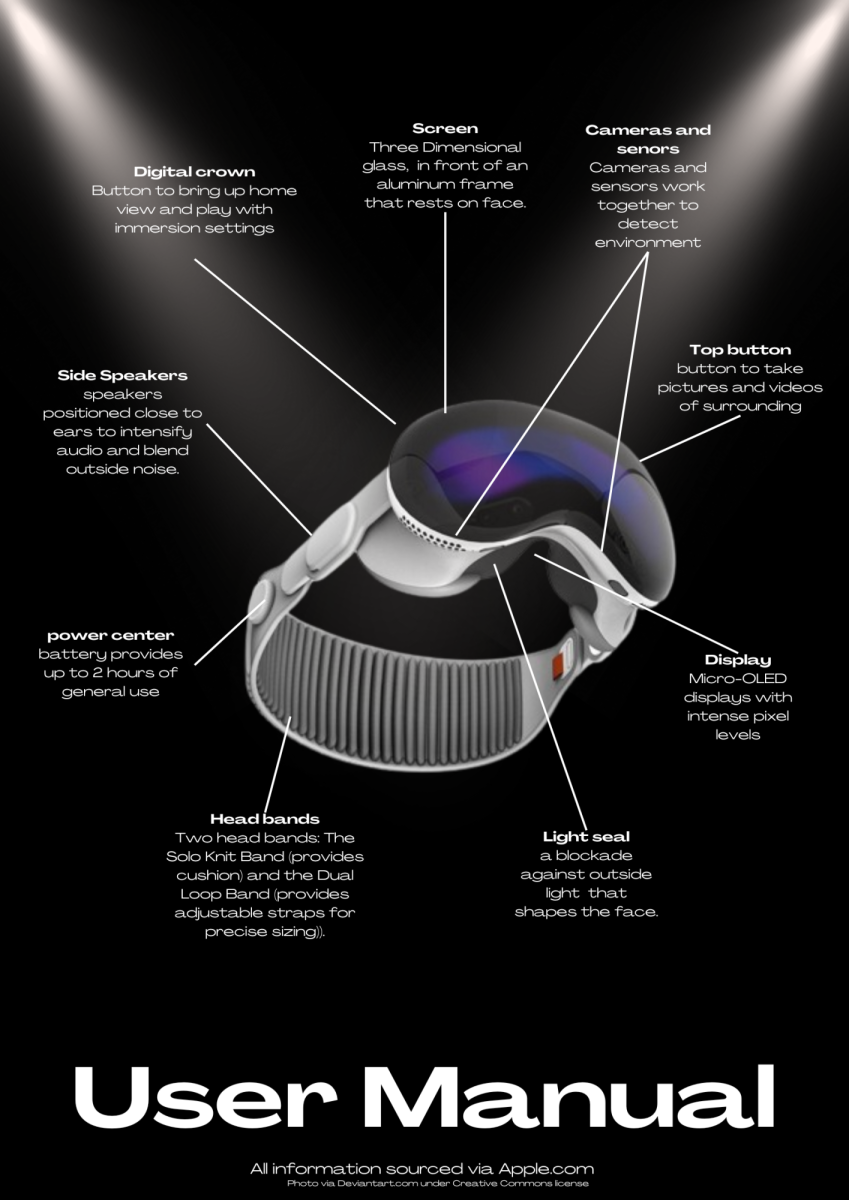The Apple Vision Pro, Apple’s latest addition to the competitive world of virtual reality (VR), hit the market on February 2. These VR headsets are Apple’s inefficient answer to the soaring demand for immersive technology. With VR becoming a major piece in gaming, education and professional training, the Vision Pros attempted to deliver a unique blend of Apple’s signature and innovative features, but failed to redefine the VR experience.
The Vision Pro retails at a whopping $3,499. Despite the large price, Apple claims that the product’s great battery life positions it as an excellent option when compared to competing headsets like the Oculus or Meta Quest, which, unlike the Vision Pro, retail at only a few hundred dollars on Amazon.
According to an Apple employee at Fair Oaks Mall, the battery life can not sustain the average nine-to-five workday. Although the device can remain powered on for two hours, this duration does not consider the active usage, which may vary.
In addition to the headset, consumers are required to buy an extra battery pack, which is non-detachable. The extra weight of the device makes carrying the headset and its extensions around possibly unpleasant.
Another inconsistency in Apple’s marketing of the Vision Pro is claiming that it is an augmented reality (AR) headset. AR blends virtual content throughout the realm of the real world, whereas VR fully immerses the user into a whole new world. Apple claims the Vision Pro’s users will enter an AR state, but its “360-degree view” says otherwise.
When using the product, the full 360-degree rotating screen ends up cutting off a little over halfway, which may be disappointing. Therefore, it is a VR headset masquerading as an AR headset.
While they may have falsely advertised the capabilities of the headset, Apple successfully generated consumer interest with its alluring and lucrative campaigns.
The promotion of the Vision Pro was not entirely reliant on commercials or advertisements. Apple CEO Tim Cook also contributed to the false narrative surrounding the product.
In an interview posted on Apple.com, Cook said, “Today marks the beginning of a new era for computing…Just as the 1Mac introduced us to personal computing, and iPhone introduced us to mobile computing, Apple Vision Pro introduces spatial computing. Built upon decades of Apple innovation, Vision Pro is years ahead and unlike anything created before—with a revolutionary new input system and thousands of groundbreaking innovations. It unlocks incredible experiences for our users.”
With enhancements around the quality of the product, it can be disappointing to see the failures of its proposed revolutionary features. Apple seems to have invested too much of their budget into inaccurate advertising and not enough into the product itself.
Considering the product’s possible shortcomings, the Vision Pro cannot be labeled as cheap. The total manufacturing of the product racks up to $1,542, making it one of Apple’s most expensive products.
The versatility of the headset is also falsely promoted. Although Apple claims buyers can access it almost everywhere, its fragile technology and discomfort limits its usage to safe, harmless environments.
Overall, although the appeal of the Vision Pro is enticing, regular consumers would not benefit from purchasing this product. The headset itself does not properly represent Apple’s past success and future possibilities as a company.
Categories:
Apple Vision Pro—magic until it is not
Photo courtesy of Zoe Ferlazzo
0







